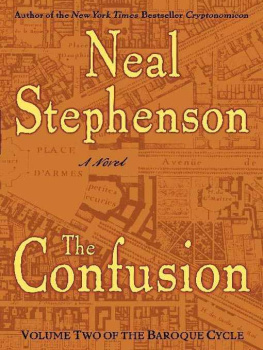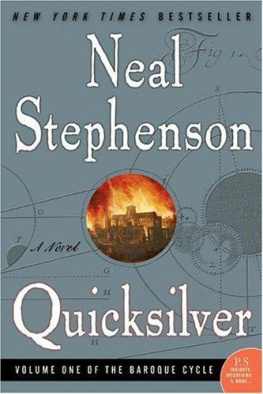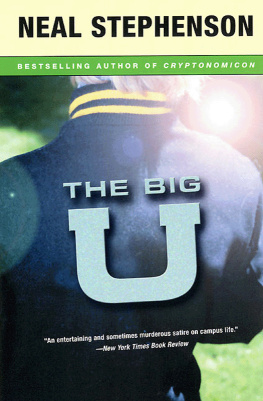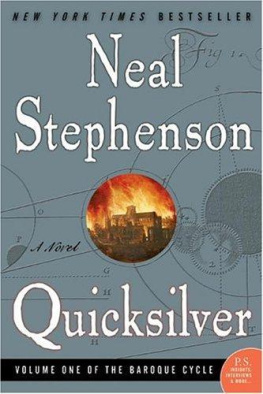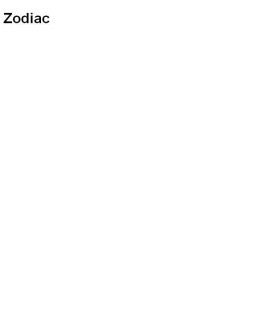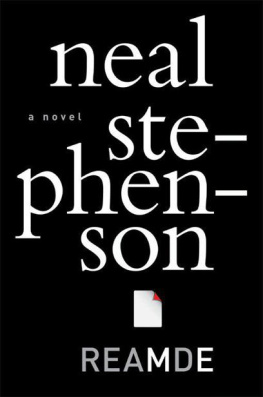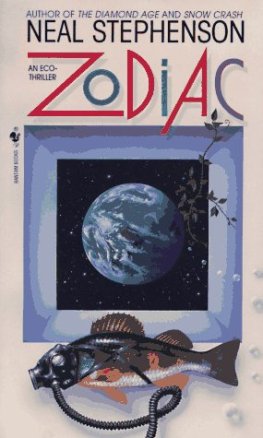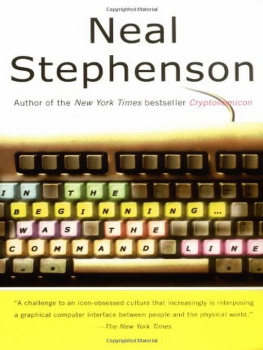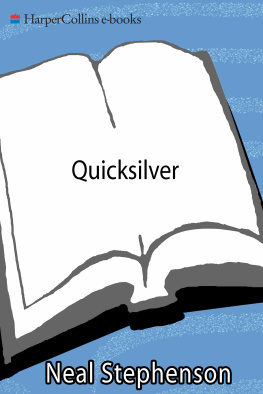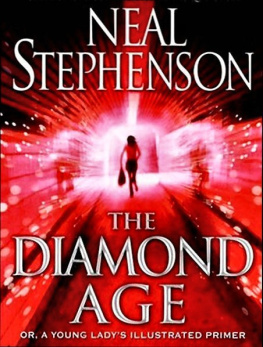Neal Stephenson - Interface
Here you can read online Neal Stephenson - Interface full text of the book (entire story) in english for free. Download pdf and epub, get meaning, cover and reviews about this ebook. year: 2005, publisher: Spectra, genre: Detective and thriller. Description of the work, (preface) as well as reviews are available. Best literature library LitArk.com created for fans of good reading and offers a wide selection of genres:
Romance novel
Science fiction
Adventure
Detective
Science
History
Home and family
Prose
Art
Politics
Computer
Non-fiction
Religion
Business
Children
Humor
Choose a favorite category and find really read worthwhile books. Enjoy immersion in the world of imagination, feel the emotions of the characters or learn something new for yourself, make an fascinating discovery.

- Book:Interface
- Author:
- Publisher:Spectra
- Genre:
- Year:2005
- Rating:3 / 5
- Favourites:Add to favourites
- Your mark:
- 60
- 1
- 2
- 3
- 4
- 5
Interface: summary, description and annotation
We offer to read an annotation, description, summary or preface (depends on what the author of the book "Interface" wrote himself). If you haven't found the necessary information about the book — write in the comments, we will try to find it.
Interface — read online for free the complete book (whole text) full work
Below is the text of the book, divided by pages. System saving the place of the last page read, allows you to conveniently read the book "Interface" online for free, without having to search again every time where you left off. Put a bookmark, and you can go to the page where you finished reading at any time.
Font size:
Interval:
Bookmark:

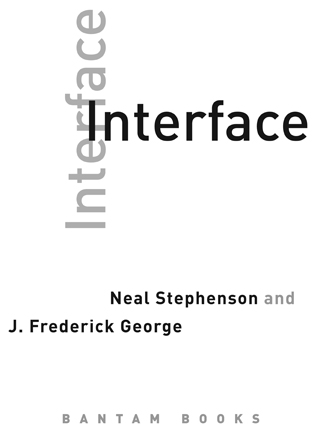
Contents
To Wilbur
part
the state of
the union
part
the ride
part
vox populi
If, though unjust, I acquire the reputation of justice, a heavenly life is promised to me. Since then, as philosophers prove, appearance tyrannizes over truth and is lord of happiness, to appearance I must devote myself. I will describe around me a picture and shadow of virtue to be the vestibule and exterior of my house; behind I will trail the subtle and crafty fox...
But I hear someone exclaiming that the concealment of wickedness is often difficult; to which I answer, nothing great is easy.... With a view to concealment we will establish secret brotherhoods and political clubs. And there are professors of rhetoric who teach the art of persuading courts and assemblies; and so, partly by persuasion and partly by force, I shall make unlawful gains and not be punished.
Plato, Republic
part
resurrection
symphony
one
WILLIAM ANTHONY Cozzanos office was a scandal. So it was whispered in the high councils of the Illinois Historical Society. For over a century, under dozens of governors, it had looked the same. Then Cozzano had come along and moved all the antique furniture into storage (Abraham Lincoln was the greatest man in history, Cozzano said, but his desk was a piece of junk, and Stephen Douglass side chair was no prize either). Cozzano had dared to move electronics into the frescoed vault of the governors officea thirty-six-inch Trinitron with picture-in-picture so that he could watch C-SPAN and football at the same time! And his chair was no antique, but a high-tech thing with as many adjustable features as the human body had bones. He had suffered enough abuse, he claimed, in Vietnam and on the frozen turf of Soldier Field and didnt deserve to be mangled by some antique chair day in and day out, Illinois Historical Society be damned. That chair was everything Cozzano wasnt: fat with padding and glossy with petal-soft leather where Cozzano was lean and craggy and weathered, a man who had waited his whole life to look the way he did now, as if carved from a block of white oak with a few quick strokes of an adze.
Cozzano was sitting in the chair one night in January, holding a fountain pen as big as an uncooked hot dog in his left hand. Cozzano returned to his home in the small town of Tuscola every weekend to mow the lawn, rake leaves, or shovel snow, so calluses made a dry rasping sound as his writing hand slid across the paper.
The fountain pen looked expensive and had been given to him by someone terribly important a long time ago; Cozzano had forgotten whom. His late wife, Christina, used to keep track of who had given him what and send out little notes, Christmas cards, and so on, but since her death, all of these social niceties had gone straight to hell, and most people forgave him for it. Cozzano found that the pens bulk fit his hand nicely, his fingers wrapped around the barrel without having to pinch it like a cheap ballpoint, and the ink flowed effortlessly onto the paper, nib scrawling and calluses rasping, as he signed the endless stream of bills, proclamations, resolutions, letters, and commendations that flowed across his desk like blood cells streaming in single file through the capillaries of the lungthe stately procession that sustained the life of the body politic.
His office was on the second floor of the east wing, directly above the capitols main entrance, overlooking a broad lawn decorated with a statue of Lincoln delivering his farewell address to Springfield. The room had only two windowstall narrow north-facing ones that were blocked even from the late afternoon sun by the north wing and the soaring capitol dome. Cozzano called it the arctic circlethe only part of Illinois that was in darkness for six months out of the year. This was a somewhat obscure and technical joke, especially in these days of endemic geographic ignorance, but people laughed at it anyway because he was the Governor. He kept his desk lamp going all day, but as the sky had darkened and as he worked into the night, he had not bothered to turn on the overhead fixtures, and he now sat in a pool of illumination in the middle of the dark office. Around the edges of the room, innumerable pieces of decoration reflected the light back at him.
Each governor decorated the office in his own way. Only a few things were immutable: the preposterous fresco on the ceiling, the massive doors with brass lions heads mounted in their centers. His predecessor had gone in for a spare, classical nineteenth-century look, filling the place up with antiques that had belonged to Lincoln and Douglas. This impressed visitors and looked nice for the tour groups who came by every hour to launch flashcube barrages over the velvet rope. Cozzano had banned the tour groups, slamming the doors in their faces so that all they could see was the brass lions, and turned the office into a cluttered Cozzano family museum.
It had started on the day of his first inauguration, with a small photo of his late wife, Christina, placed on the corner of his historically inaccurate desk. Naturally, photos of his children, Mary Catherine and James, came next. But there was no point in stopping with the immediate family, and so Cozzano had brought in several boxes containing pictures of patriarchs and matriarchs going back several generations. He wanted pictures of his friends too, and of their families, and he also needed various pieces of memorabilia, some of which were chosen for sentimental reasons, some for purely political ones. By the time Cozzano was finished decorating his office, it was almost filled with clutter, smelling salts had to be brought in for the Historical Society, and, as he sat down for the first time in his big leather chair, he could trace the entire genealogy and economic development of the Cozzano clan, and of twentieth-century Illinois, which amounted to the same thing.
There was an old aerial photograph of Tuscola as seen from its own water tower in the 1930s. It was a town of a few thousand people, about half an hour south of the academic metropolis of Champaign-Urbana and a couple of hours south of Chicago. Even in this photo it was possible to see gaudy vaults in the town cemetery, and Duesenbergs cruising the streets. Tuscola was, for a farm town, bizarrely prosperous.
In an oval frame of black walnut was a hand-tinted photograph of his great-grandfather and namesake Guillermo Cozzano, who had come to Illinois from Genoa in 1879. In typically contrary Cozzano fashion he had bypassed the large Italian communities on the East Coast and found work in a coal mine about thirty miles southwest of Tuscola, where soil and coal were the same color. He and his son Giuseppe had gone into the farming business, snapping up one of the last available parcels of high-quality land. In 1912, Giuseppe and his wife had their first child, Giovanni (John) Cozzano, followed three and five years later by Thomas and Peter. All of these events were recorded in photographs, which Cozzano would be more than happy to explain to visitors if they made the mistake of expressing curiosity, or even allowing their eyes to stray in that direction. Most of the photos featured buildings, babies, or weddings.
John Cozzano (photo) lost his mother to influenza at the age of six and, from that point onward, lived his life as if he had been shot from a cannon. During his high-school years in the vigorous 1920s he held down a part-time job at the local grain elevator (photo). By the time economic disaster struck in the 1930s he had worked his way up into the management of that business. With one foot in his fathers farm and the other in the grain elevator, John was able to get the family through the Depression in one piece.
Next pageFont size:
Interval:
Bookmark:
Similar books «Interface»
Look at similar books to Interface. We have selected literature similar in name and meaning in the hope of providing readers with more options to find new, interesting, not yet read works.
Discussion, reviews of the book Interface and just readers' own opinions. Leave your comments, write what you think about the work, its meaning or the main characters. Specify what exactly you liked and what you didn't like, and why you think so.

